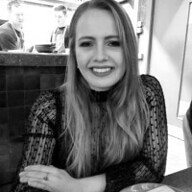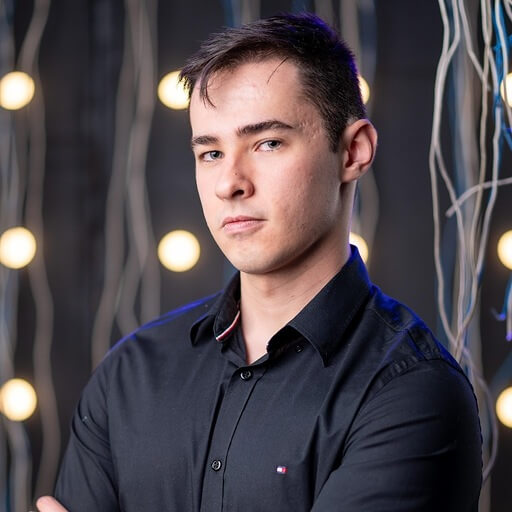- Who started psychoanalysis?
- Who is Sigmund Freud?
- What are the main principles of psychoanalysis?
- What impact has psychoanalysis had?
Who was the Father of Psychoanalysis?
Austrian neurologist Sigmund Freud, the father of psychoanalysis, was born May 6, 1856. Freud’s development of psychoanalysis began with his involvement with patients suffering from hysteria and neurosis.
Hysteria was a diagnosis used for patients (often women) whose physical symptoms and emotional disturbances did not have an apparent physical cause. 1
Many of Freud’s early patients were also frequently suffering from traumatic sexual experiences, which would later form a primary focus in Freud’s psychoanalytic theory.
Freud and Josef Breuer
During the 1890s, Freud began collaborating with Josef Breuer, an Austrian physician who used hypnosis as a means of treating patients suffering from neurosis. During their studies, Freud and Breuer found that patients who were under a hypnotic state showed improvement. They theorized that this was due to the patients’ deepest impulses being brought to the surface of their consciousness. By 1896, Freud was using the term "psychoanalysis".
Psychoanalysis in Psychology
Psychoanalysis is considered both a theory as well as a therapeutic practice. It uses the interaction between the conscious and unconscious mind as a means of treating mental disorders by bringing a person's deepest fears, impulses, and childhood experiences in the unconscious mind to the surface of the conscious mind.
Conscious Vs. Unconscious
Let’s take a look at the differences between the conscious mind and the unconscious mind.
| Conscious | Unconscious |
|---|
| Mainly controls intellectual functions. | Mainly controls physical functions. |
| Controls planning, decision making, communication, and logic. | Basic functions such as breathing, feeling, digestion, and emotion. |
| Part of the mind that is fully aware. | Part of the mind that is not fully aware. |
Freud believed that any mental distress a person experienced was due to the build-up of repressed feelings, sexual impulses, and fears found deep within their unconscious minds. This would happen over the course of many years.
Freud's Structure of Personality
Freud developed a structure of personality made up of our conscious and unconscious selves. The structure was made of three parts: id, ego, and superego.
The Id
The id is the part of our unconscious mind that controls our most basic, primal impulses. Freud believed babies solely operated from the id, as their behavior was almost completely controlled by their most primal urges such as eating and sleeping.
The Ego
The ego operates on the level of executive function, dealing with perception, cognition, etc. It operates on both preconscious and conscious levels of awareness. The ego controls the id’s urges to simply satisfy our most basic needs, and helps us to behave in ways that are more socially acceptable.
The Superego
The superego is where we hold our ideals and values. It acts as a censor for both the id and ego in our personality. The superego helps us to behave in a way that is in line with our morals.
Defense Mechanisms
The use of defense mechanisms is the ego’s way of protecting itself from distress. Family and culture can influence how we learn these defense mechanisms, which most commonly take the form of repression.
Repression is where a person may try to push down distressing thoughts or impulses into their unconscious mind, out of a fear that their conscious mind will not be able to handle them.
Freud believed that sexual impulses are the most common impulse being suppressed. This led to the development of his Psychosexual Theory of Development. Freud often used this theory as a psychoanalytic method to bring these repressed unconscious thoughts to the conscious mind.
What is the Psychosexual Theory in Psychoanalysis and Psychology?
The psychosexual theory is made up of five stages Freud believed marked the development of adolescence. Those five stages are oral, anal, phallic, latent, and genital.
Examples of Psychosexual Theory: 'Little Hans'2
In this case study, Freud worked with a five-year-old boy, "Little Hans", who had a severe phobia of horses. Hans' fear was so intense, he was often unable to leave the house in fear of encountering a horse. Freud believed that this was due to Hans being in his phallic stage of development, in which he began to be aware of genitals. Freud linked this to a horse’s large genitals; he further believed Hans was displacing his fear of his father onto his fear of horses. This developed into one of Freud’s most controversial ideas, the Oedipus complex.
Oedipus Complex is the idea that boys, due to their fear of losing the love of their mothers, feel threatened by, and resentful of their fathers.
Freud believed this was the true source of Little Hans’ fear of horses. The psychoanalytic theory often pointed to the sexual impulses that were being repressed into the unconscious mind.
Techniques of Psychoanalysis
Freud developed several psychoanalytic techniques which he used to reveal the unconscious mind, including transference, free association, and dream analysis.
When Freud first began practicing psychoanalysis, he would often have patients lie on a couch and talk about their childhood memories or dreams while he took notes.
This was a lengthy process requiring 2-5 sessions per week. However, he found it necessary to disarm the patient’s defense mechanisms.
 A psychoanalyst takes notes while the patient is talking. pixabay.com
A psychoanalyst takes notes while the patient is talking. pixabay.com
Transference
Freud thought it important for the analyst to be a completely blank slate to the patient, being careful not to disclose very much information about themselves. This allowed the analyst to use a powerful psychoanalytic technique called transference.
Transference is the emotional attachment to the analyst created by the patient, that is meant to resemble the patient's relationship with parental figures.
Freud often focused heavily on the mother-child transference of the patient. For this to be an effective psychoanalysis technique, the analyst must create a non-judgemental and accepting environment. Once transference is established, analysts can use their observations on the relationship to interpret what parts of the unconscious mind are coming to the surface.
Free Association
Free association was one of the psychoanalytic techniques Freud used to replace hypnosis in treating neurotic patients.
Free association is the uncensored expression of words, thoughts, or feelings on a certain topic.
The idea is to allow the patient to say whatever comes to their mind before they begin to repress their thoughts or feelings. In practice, the psychoanalyst gives the patient a word or idea, then allows them free rein. The analyst’s goal is to identify any repetitive topics or patterns.
Freudian Slips
A Freudian slip is a term used to describe a moment where a person says or does something they didn’t intend, that is a reflection of some inner conflict of the unconscious mind. The psychoanalytic perspective believes these are important moments where a patient might reveal something their unconscious mind is repressing from their conscious mind.
Dream Analysis
To Freud, dream analysis was one of the most important of all psychoanalytic techniques. He wrote an entire book entitled Interpretation of Dreams. He believed dreams were the best path to the unconscious mind, as they revealed the patient's most repressed feelings and impulses.
Dream analysis is the process of using a person's dreams to identify repressed subconscious thoughts and impulses.
'The Wolf Man3
In this case study, Freud treated a man named Sergei Pankejeff, or the "Wolf Man". He had an intense fear of wolves as well as other animals and insects. During their sessions, Pankejeff revealed a dream that Freud would later use in his psychoanalysis. In this dream, Pankejeff was lying on his bed when suddenly, the window revealed six or seven white wolves.
Pankejeff described these wolves as having fox-like tails, with their eyes fixed on him. Freud would later tie this dream to childhood trauma and consider it as a turning point in Pankejeff’s treatment.
 The "Wolf Man" saw white wolves in his dreams which are attributed to childhood trauma. pixabay.com
The "Wolf Man" saw white wolves in his dreams which are attributed to childhood trauma. pixabay.com
What Are the Impacts of Psychoanalysis?
Freud's work was so impactful that many of its terms have become part of day-to-day speech. It set the stage for neo-psychoanalysts such as Carl Jung and Albert Adler, and has echoes in today's psychotherapy.
Psychoanalysis and Modern Psychotherapy
The psychoanalytic theory has influenced several modern-day practices in psychotherapy. It has been the framework for mental health treatments for conditions such as:
The talk therapy structure of psychoanalysis opened a path that would be used to help alleviate a person’s psychological distress. It also led to the development of experimental psychology.
Neo-Psychoanalysis
Many psychologists that followed Freud would later expand upon his ideas. Carl Jung, for example, believed the unconscious mind did not simply hold repressed desires; it also stored repressed memories specific to an individual’s ancestral past as well. He also believed that behavior was not only dictated by past experiences or early childhood, but also by a person’s future aspirations.
Albert Adler agreed with Freud that a person’s internal processes and early interactions shaped a large part of a person’s psychology. However, he believed that external factors should also be taken into account. This led him to form his own school of thought, called Individual Psychology.
Critiques of Psychoanalysis
While psychoanalytic techniques have made an important impact, this school of thought is not without criticism. The most common criticisms of Freud’s psychoanalytic techniques are:
They're not based on scientific research.
Focus too heavily on case studies and clinical observations.
There is too much focus on sexual deviancies.
Do not account for external or biological impacts on behavior.
Psychoanalysis - Key takeaways
Psychoanalysis is considered both a theory as well as a therapeutic practice.
Psychoanalysis uses the interaction between the conscious and unconscious mind as a means of treating mental disorders by bringing a person's deepest fears, impulses, and childhood experiences in the unconscious mind to the surface of the conscious mind.
Freud believed dreams are the best path to the unconscious mind, as they reveal the most repressed feelings and impulses of the unconscious mind.
Psychoanalysis has provided a framework for mental health treatments for conditions such as depression, eating disorders, anxiety disorders, and somatic disorders.
1 Passer, M., & Smith, R. (2007). Psychology: The Science of Mind and Behavior (4th ed.). McGraw-Hill Humanities/Social Sciences/Languages.
2Freud, S. (1909). "Analysis of a phobia of a five-year-old boy"; The Pelican Freud Library (1977), Vol 8, Case Histories 1, pages 169-306.
3 Freud, S. (1918). "History of an Infantile Neurosis"; The Standard Edition of the Complete Psychological Works of Sigmund Freud, Volume XVII (1917-1919): An Infantile Neurosis and Other Works, 1-124.
Similar topics in Psychology
Related topics to Scientific Foundations of Psychology
How we ensure our content is accurate and trustworthy?
At StudySmarter, we have created a learning platform that serves millions of students. Meet
the people who work hard to deliver fact based content as well as making sure it is verified.
Content Creation Process:
Lily Hulatt is a Digital Content Specialist with over three years of experience in content strategy and curriculum design. She gained her PhD in English Literature from Durham University in 2022, taught in Durham University’s English Studies Department, and has contributed to a number of publications. Lily specialises in English Literature, English Language, History, and Philosophy.
Get to know Lily
Content Quality Monitored by:
Gabriel Freitas is an AI Engineer with a solid experience in software development, machine learning algorithms, and generative AI, including large language models’ (LLMs) applications. Graduated in Electrical Engineering at the University of São Paulo, he is currently pursuing an MSc in Computer Engineering at the University of Campinas, specializing in machine learning topics. Gabriel has a strong background in software engineering and has worked on projects involving computer vision, embedded AI, and LLM applications.
Get to know Gabriel









